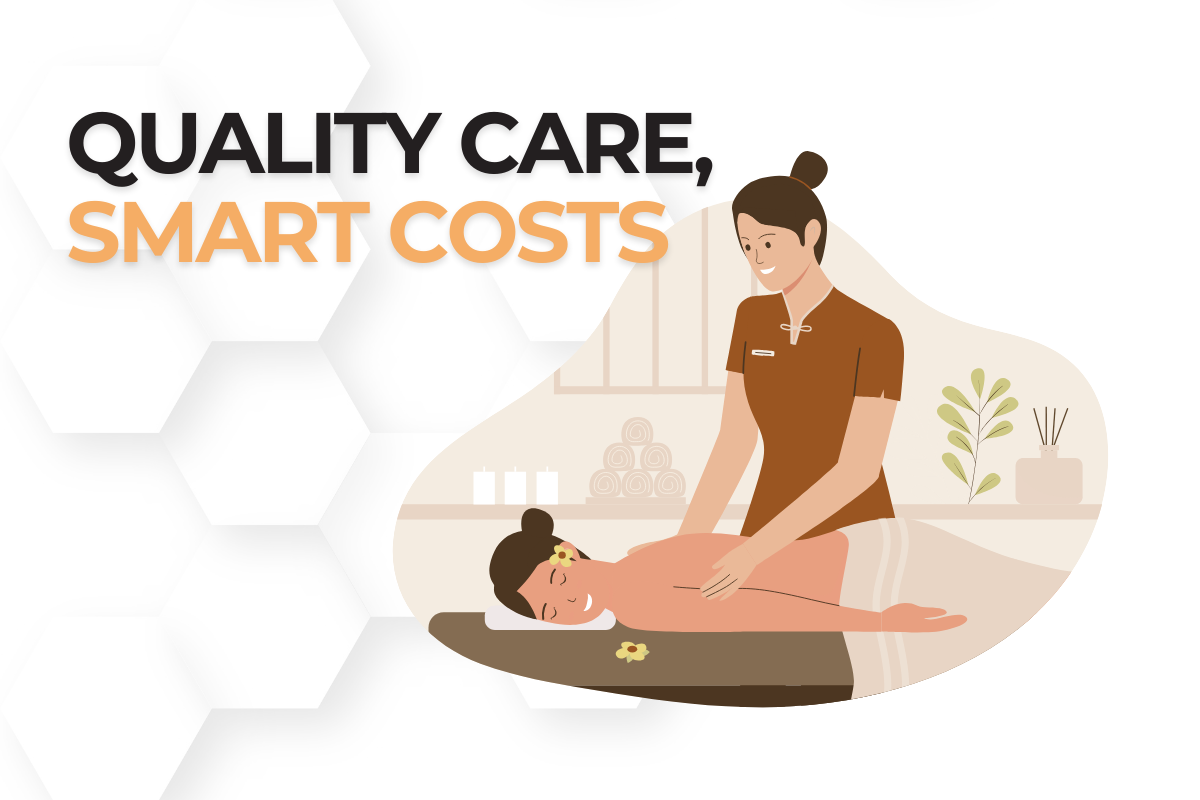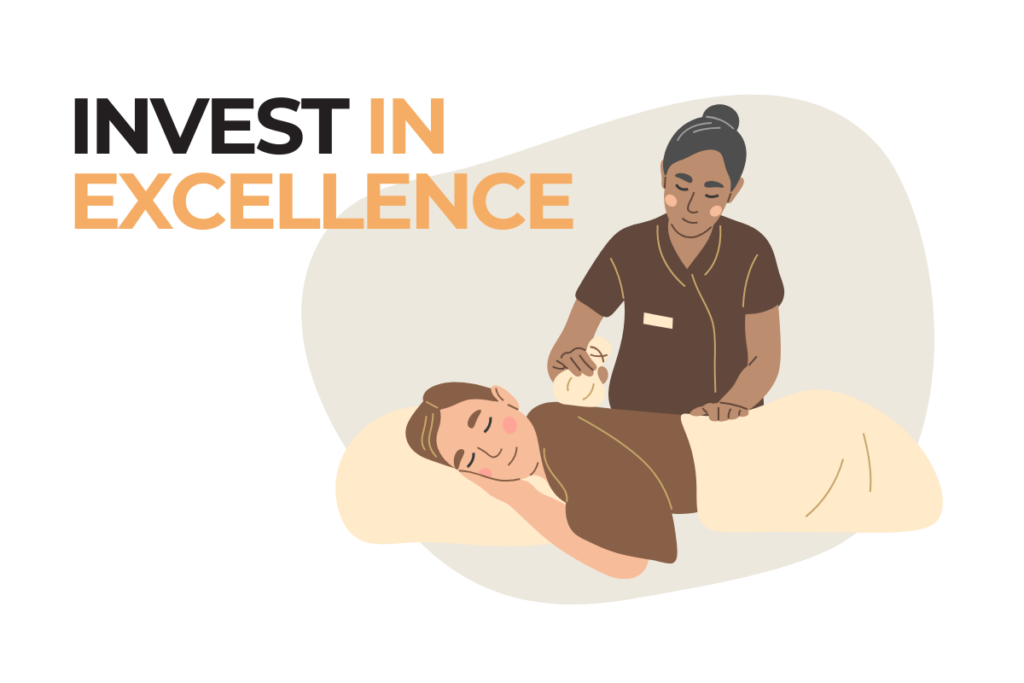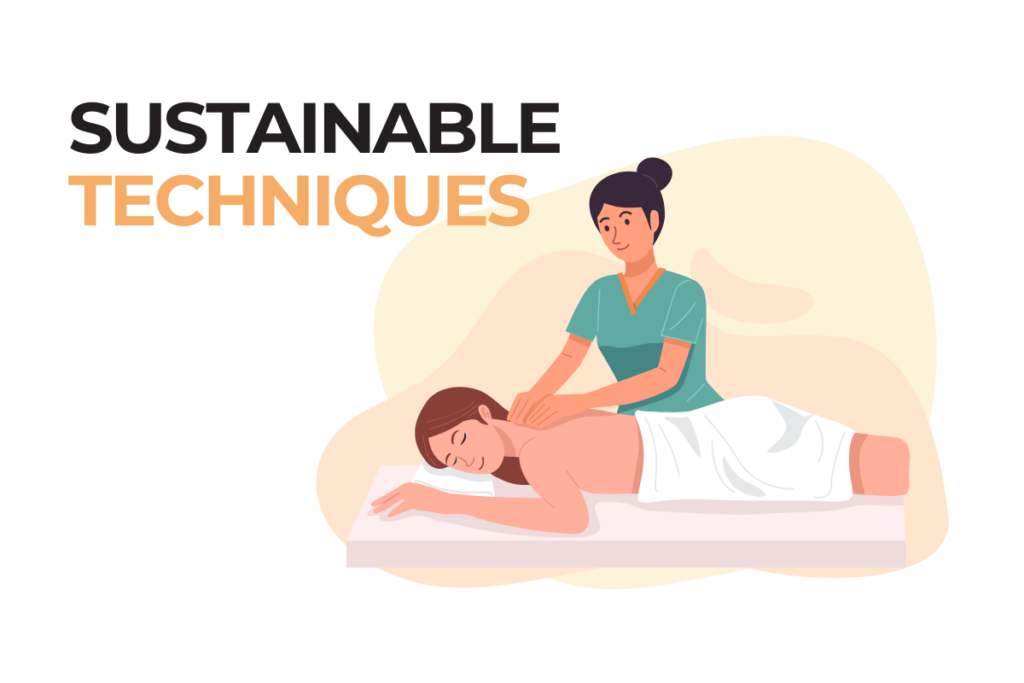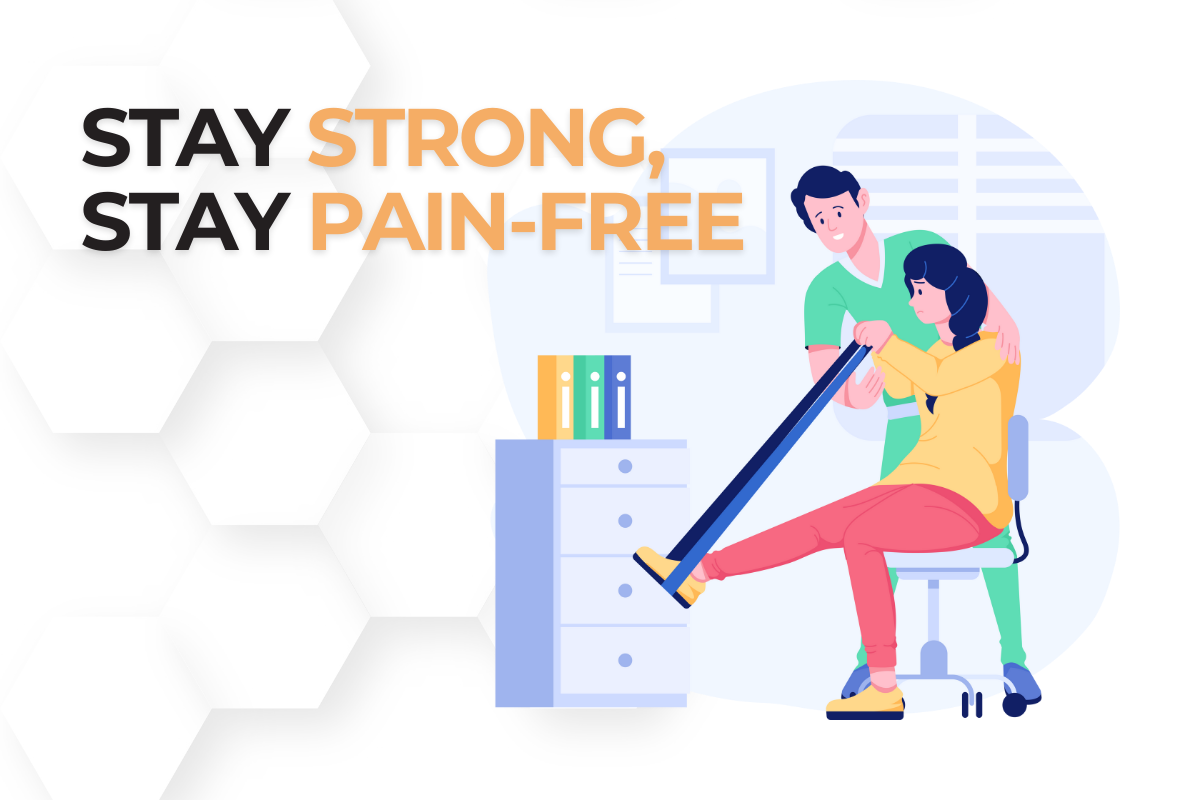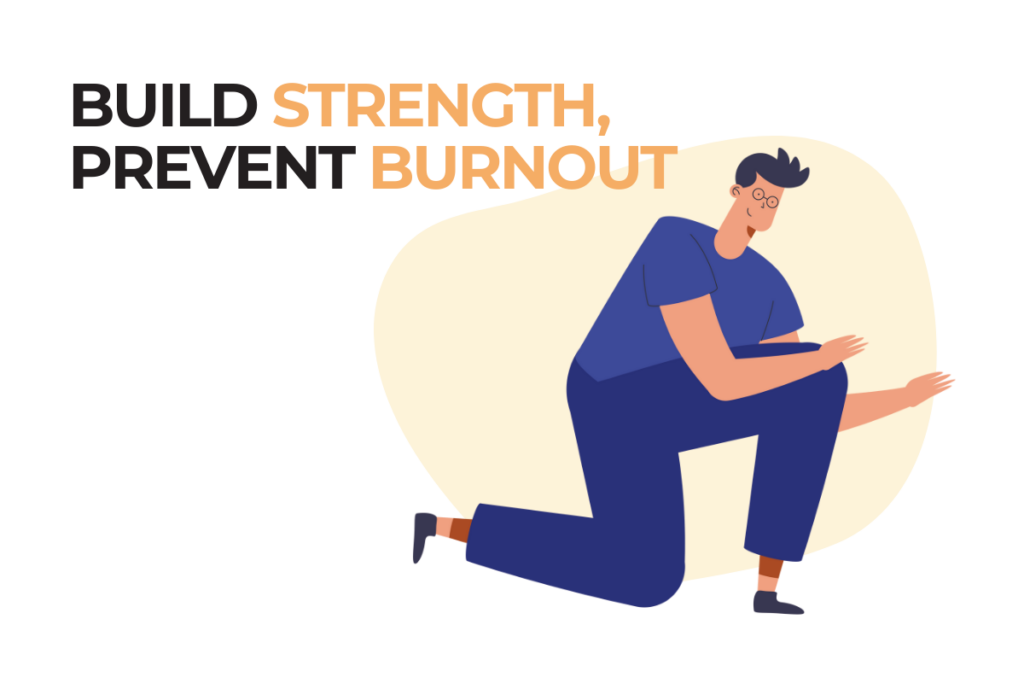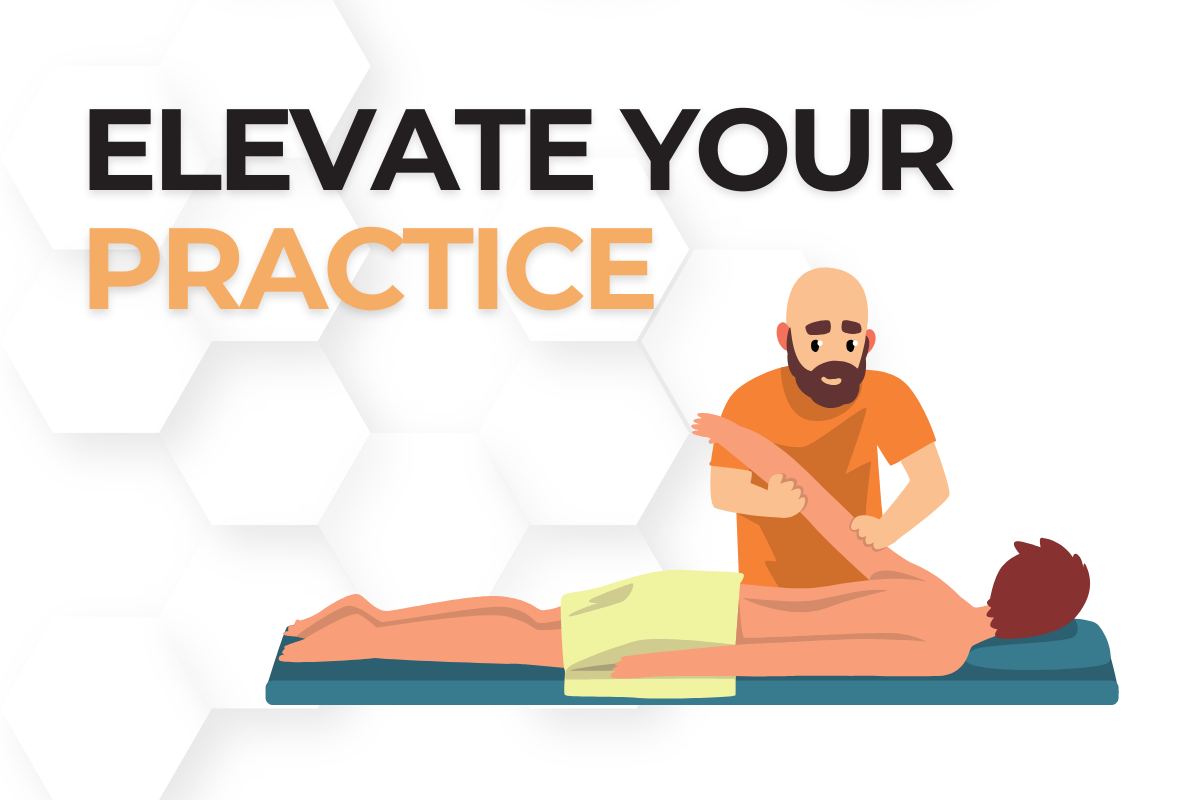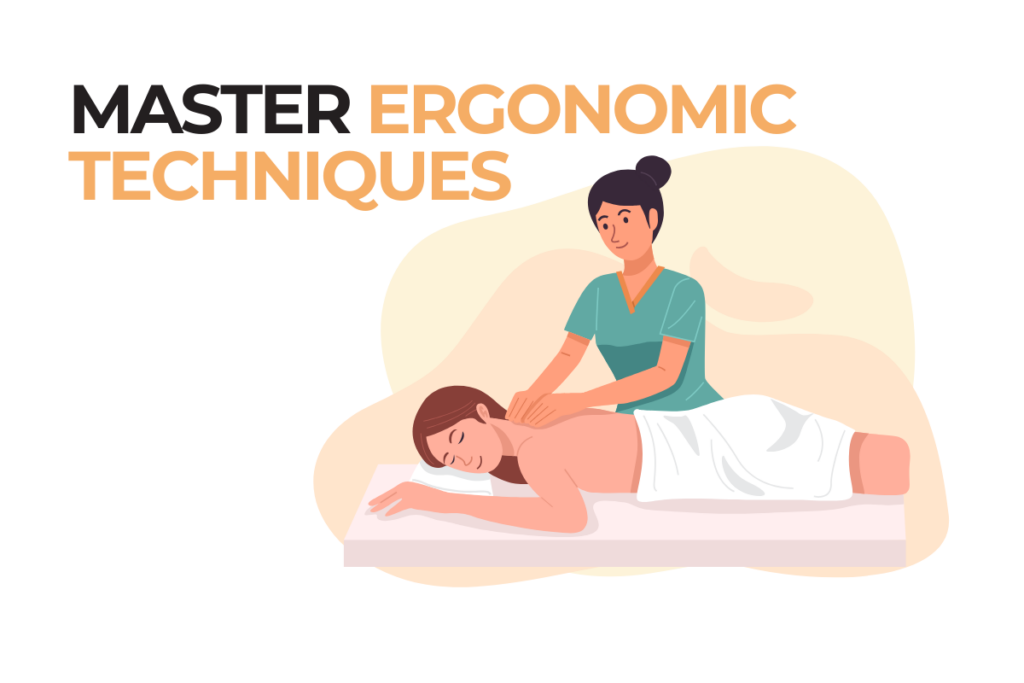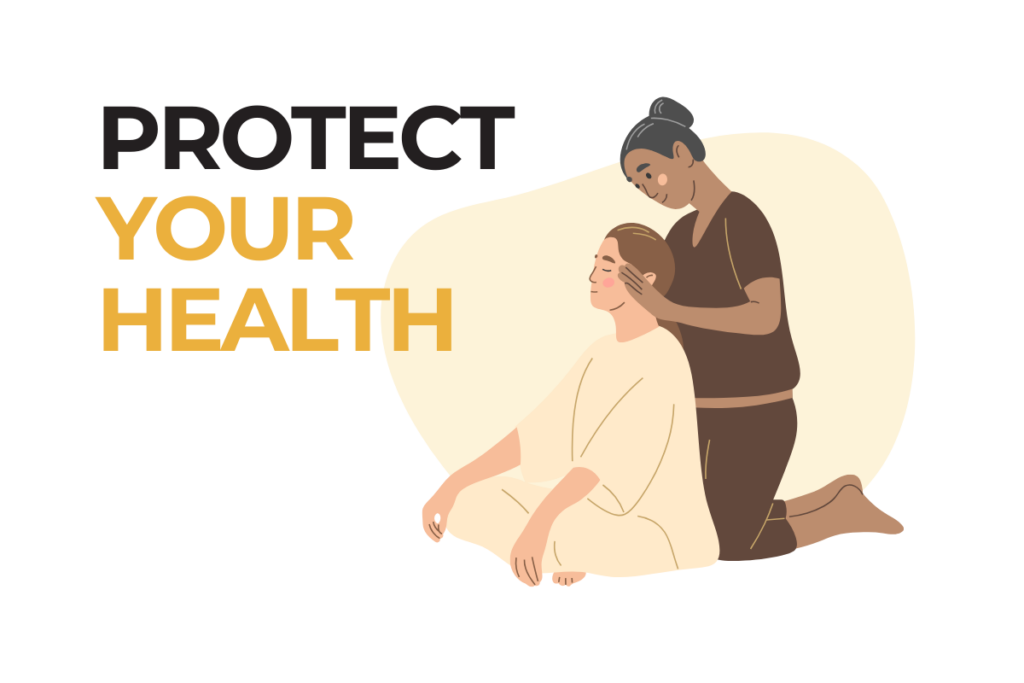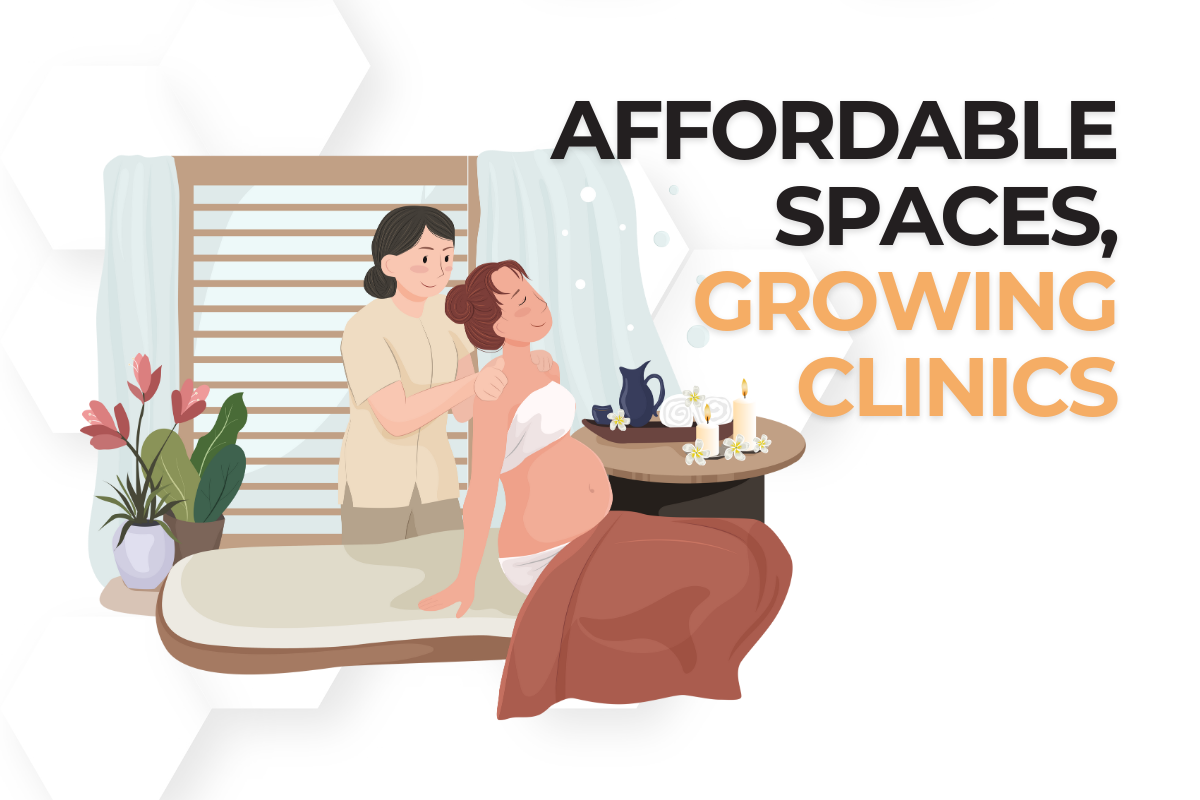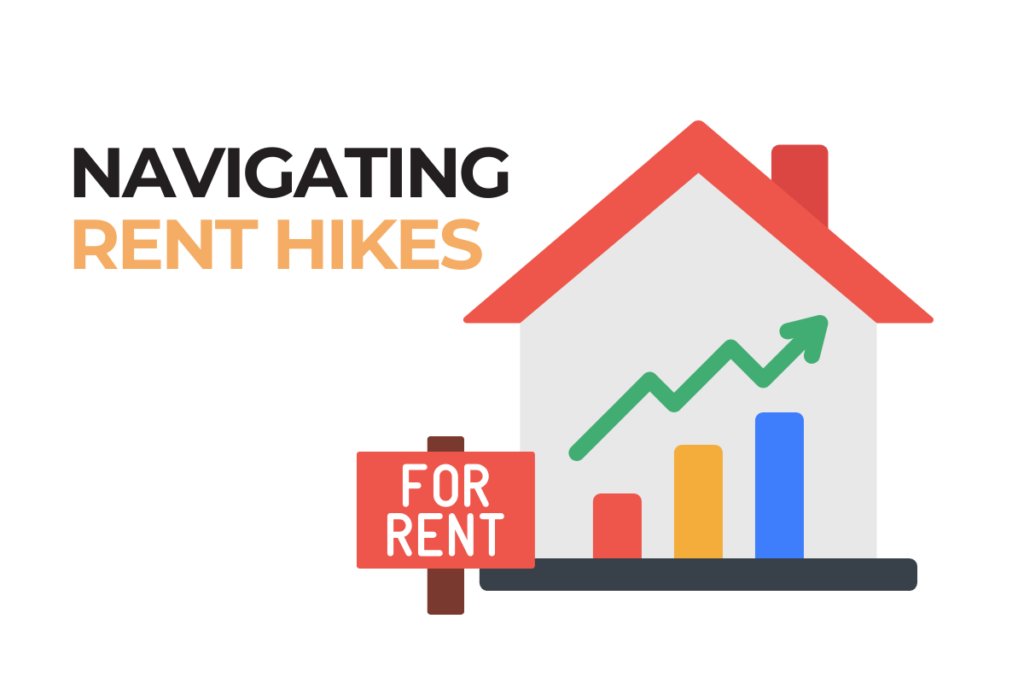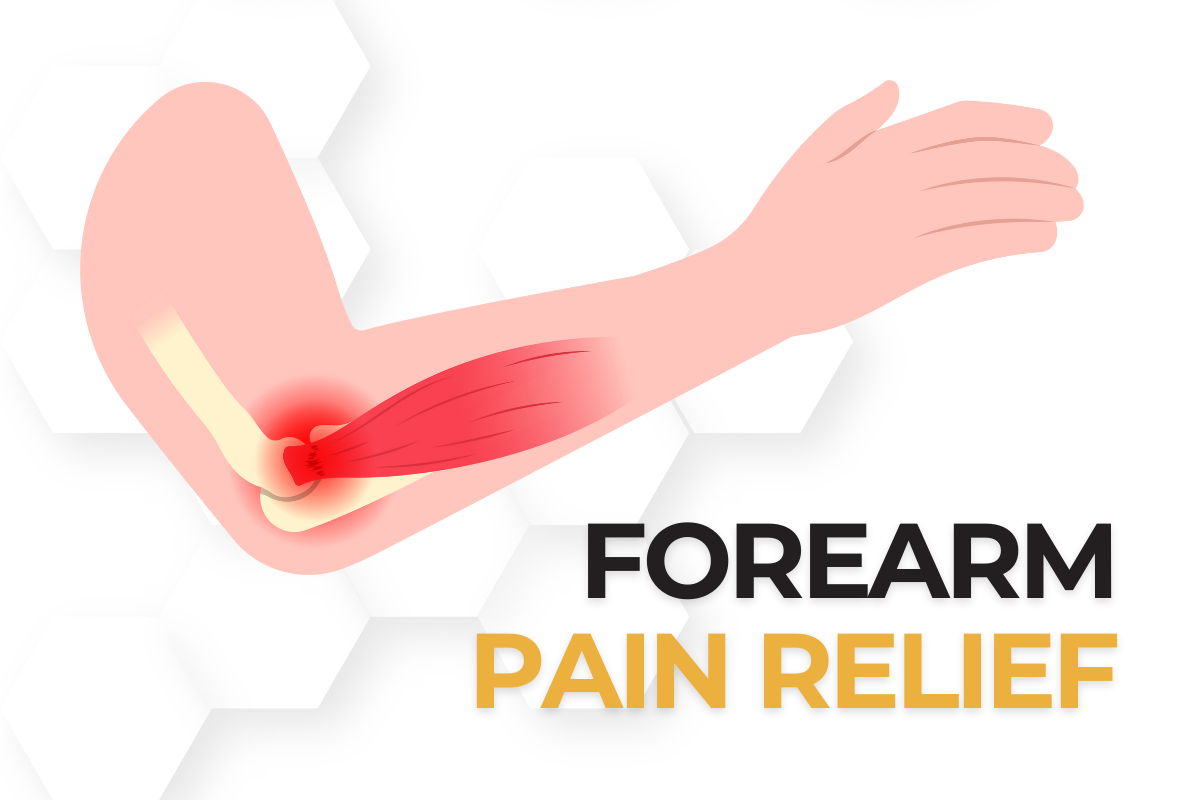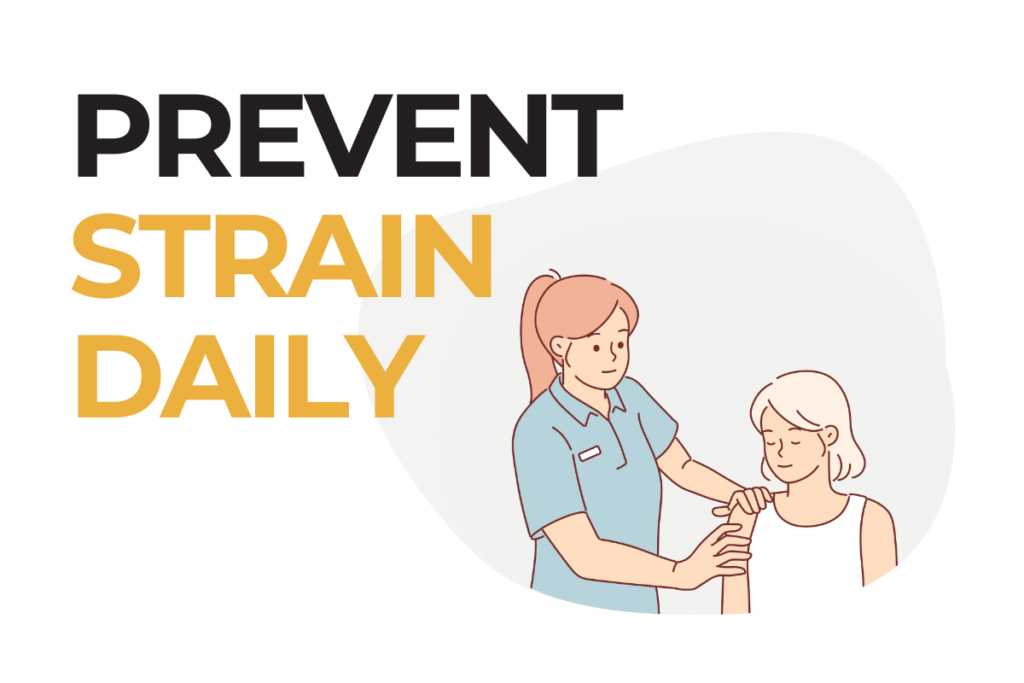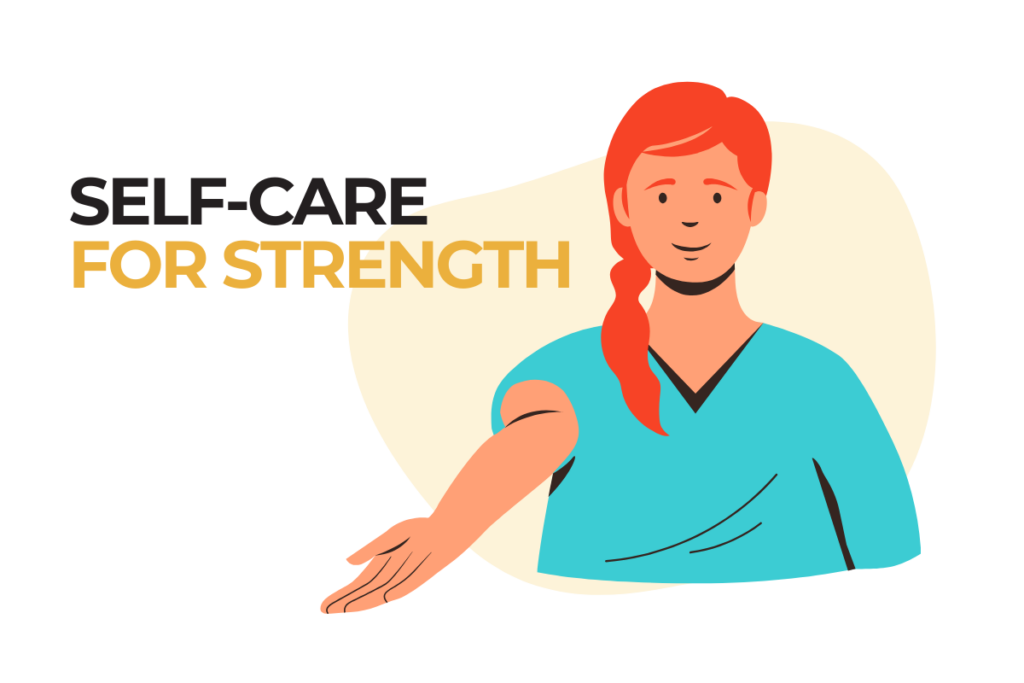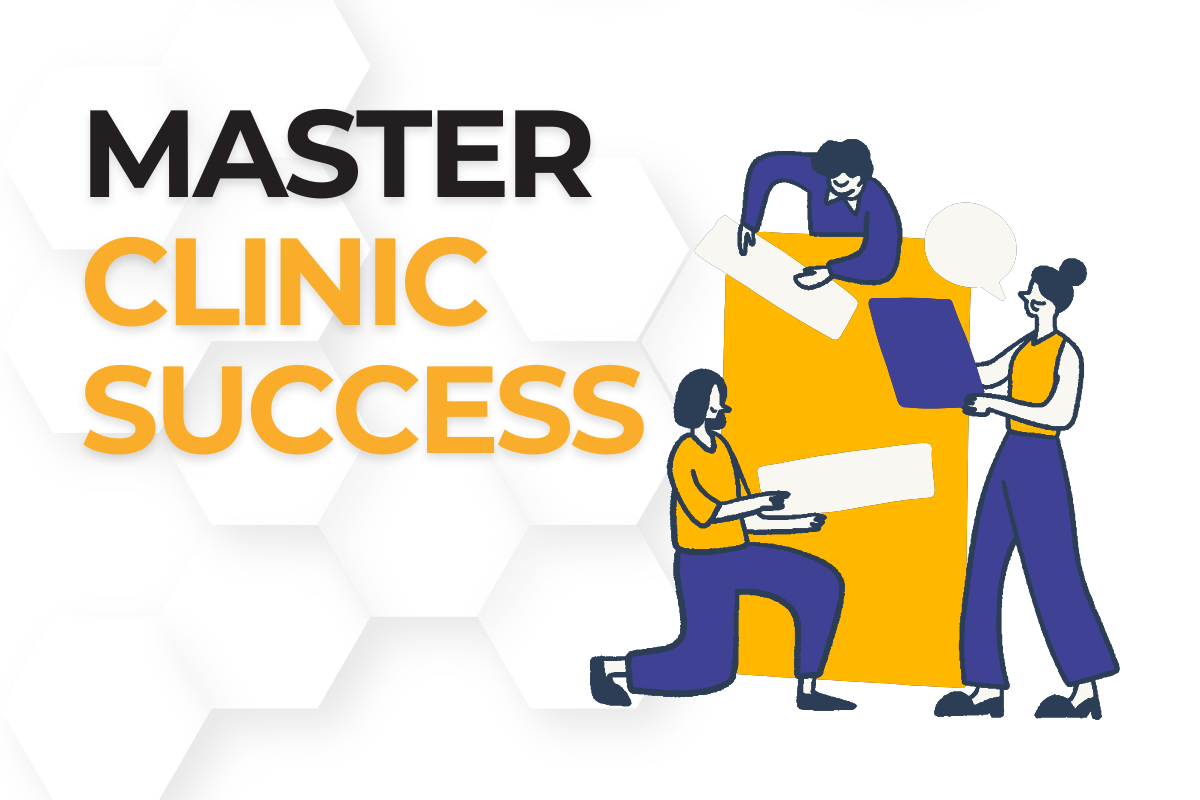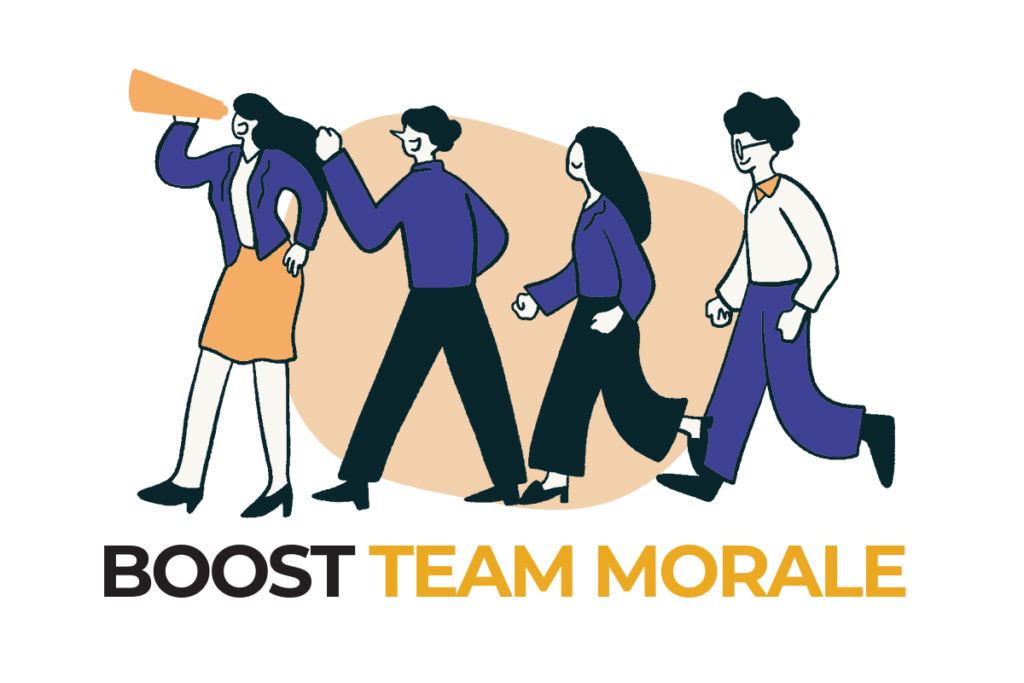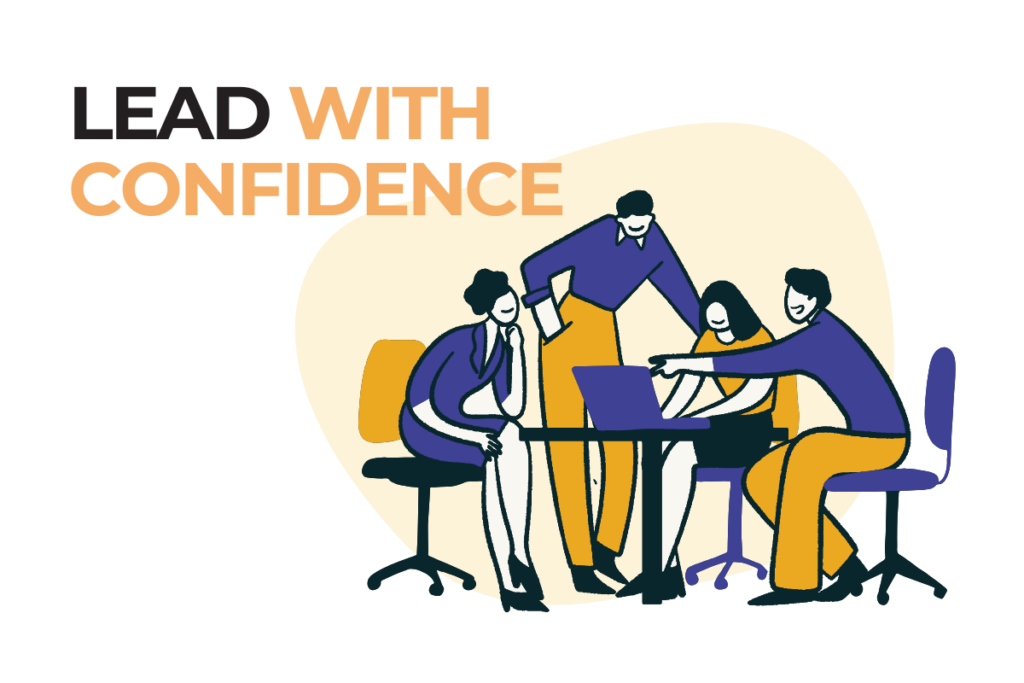The Struggle is Real: Finding Balance in a Demanding Profession
Work-life balance for massage therapists and fulfilling yet physically and emotionally demanding career with a healthy personal life is a common challenge. According to the American Massage Therapy Association, 65% of therapists report experiencing regular physical and mental exhaustion from their work. This cycle of fatigue can make it difficult to recharge fully, leading to an ongoing drain on energy, focus, and enthusiasm for the profession. Left unaddressed, these challenges can impact both personal well-being and career longevity, increasing the risk of burnout and even physical injury.
To sustain a fulfilling career in massage therapy without sacrificing personal wellness, it’s essential to adopt strategies that create balance, prioritize recovery, and set clear boundaries that protect both your body and mind. Below, we’ll explore actionable strategies designed to help you establish harmony between your professional and personal life. From setting achievable limits on your workload to incorporating self-care routines that truly restore, these practices will empower you to thrive in a demanding profession, fostering a long-term career that supports—not depletes—your well-being.
Understanding the Challenge of Work-Life Balance
What Does Work-Life Balance Mean in Massage Therapy?
Work-life balance goes beyond just scheduling work hours; it’s about creating intentional boundaries and routines that allow massage therapists to recharge physically and mentally. A balanced approach allows therapists to bring their best selves to their practice and enjoy quality personal time, preventing long-term burnout.
Common Pitfalls to Avoid
Many massage therapists fall into common traps, such as:
- Taking on last-minute clients, sacrificing personal plans.
- Answering work messages during personal hours.
- Foregoing self-care activities due to a packed schedule.
Avoiding these traps can help create a clear separation between work and personal life, leading to more energy and satisfaction in both.
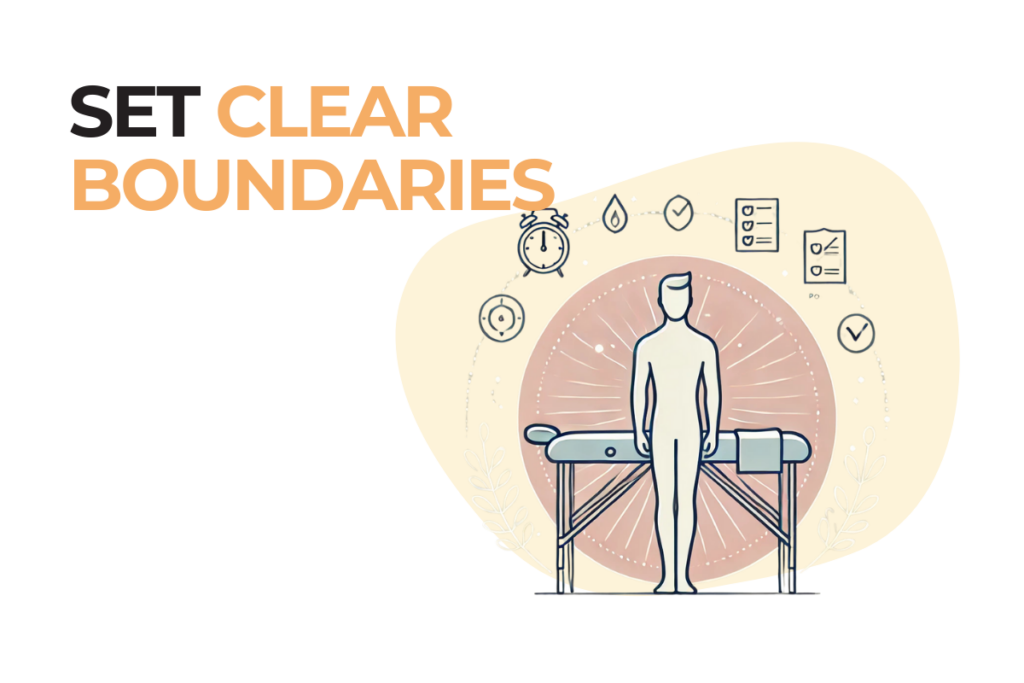
Setting Clear Professional Boundaries
Defining Your Office Hours
To prevent work from encroaching on your personal time, set specific office hours and stick to them. By communicating these hours to clients, you’ll build expectations around when you’re available, allowing you to fully disconnect when off the clock.
Tips for Communicating Your Availability:
- Include your office hours on your business website and booking system.
- Set up automatic responses for out-of-hours messages.
- Politely decline last-minute appointments that fall outside your working hours.
Creating a Client Communication Protocol
Establishing a communication protocol can help you manage interactions efficiently and reduce after-hours messages. By setting clear guidelines, clients know when and how to reach you, improving your personal time while fostering a respectful professional environment.
Steps for an Effective Communication Protocol:
- Use email or text for scheduling and reminders.
- Define response times, such as “Replies within 24 hours during business hours.”
- Consider using Hivemanager’s client communication tools to automate responses and streamline appointment management.
Prioritizing Self-Care and Well-Being
Physical Health Maintenance
Massage therapy is physically demanding, making it essential to take care of your body. Regular exercise, stretching, and good ergonomics help prevent strain and injury, ensuring longevity in your career.
Self-Care Tips for Physical Health:
- Perform daily stretching exercises to maintain flexibility.
- Schedule regular massages or physical therapy for yourself.
- Use ergonomic equipment that supports healthy posture during treatments.
Nurturing Emotional and Mental Health
Engaging in activities that replenish mental and emotional energy is critical. Simple practices like mindfulness or meditation can reduce stress, helping you feel more centered and present in both work and life.
Ideas for Emotional Well-Being:
- Set aside time for hobbies that relax you.
- Practice mindfulness exercises, like deep breathing or guided meditation.
- Seek support from fellow therapists or mental health professionals when needed.
Scheduling Regular Personal Time
Taking time off may feel challenging, but it’s necessary for mental clarity and preventing burnout. Plan vacations and personal days proactively to ensure rest and rejuvenation, which will make you more effective in your work.
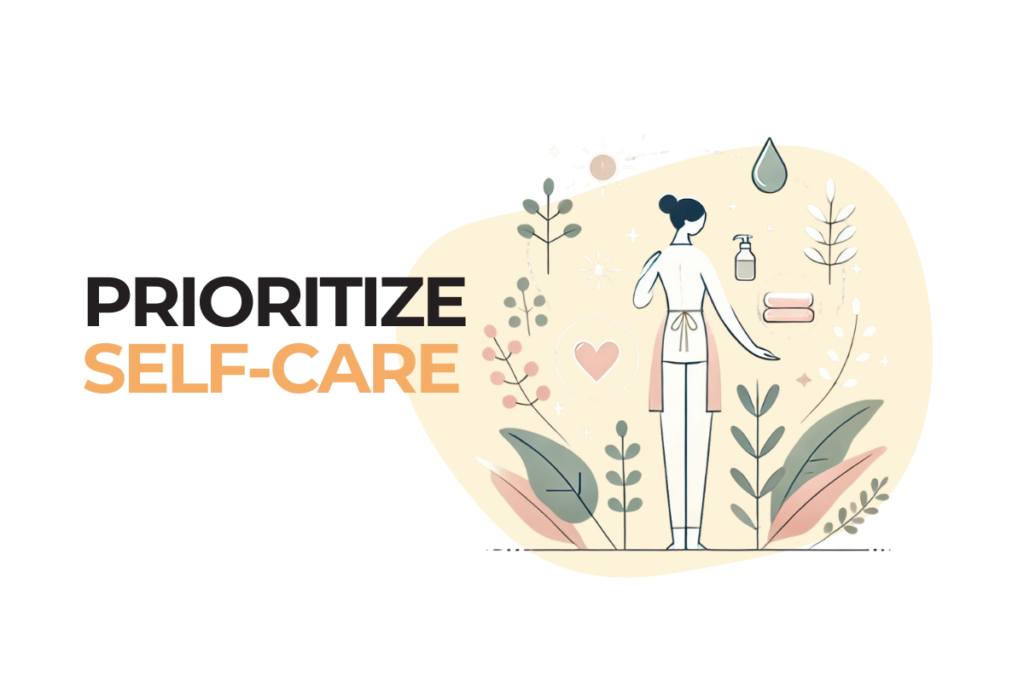
Effective Time Management Techniques
Streamlined Scheduling Strategies
Efficient scheduling allows you to balance your workload without overwhelming yourself. Prioritize peak business hours and ensure enough time between appointments to avoid feeling rushed.
Scheduling Best Practices:
- Use appointment management software, such as Hivemanager, to organize bookings and avoid double-scheduling.
- Set a daily limit for client sessions to avoid fatigue.
- Plan buffer time between appointments to recharge.
Delegating Non-Essential Tasks
Running a massage practice involves many administrative tasks. Outsourcing or automating these can save time and reduce stress, allowing you to focus on your clients and yourself.
Ideas for Delegation:
- Hire an assistant for tasks like answering emails or managing social media.
- Use online tools to streamline bookkeeping and appointment reminders.
Avoiding Overcommitment
To prevent burnout, be realistic about what you can handle. By limiting the number of sessions you accept and avoiding last-minute bookings, you’ll have time for recovery and personal interests.
Enhancing Client Relationships While Setting Boundaries
Maintaining Professionalism in Client Interactions
Clients appreciate boundaries when they’re established professionally. By keeping interactions friendly yet focused on care, you can build strong, respectful client relationships.
Tips for Professional Client Relations:
- Stay focused on the purpose of the session, addressing client needs with empathy.
- Avoid sharing overly personal information to maintain professional boundaries.
- Clearly communicate policies around cancellations and rescheduling.
Educating Clients on Your Policies
Clients are more likely to respect your boundaries when they understand them. Explain your policies on appointments, cancellations, and communications so there’s no ambiguity.
Managing Client Expectations Effectively
From the first interaction, set clear expectations about your services and limits. This can help clients understand when and how they can reach you, reducing off-hours interactions.
Financial Planning for Stability
Creating a Financial Safety Net
Financial security plays a big role in reducing stress and allowing you to prioritize personal well-being. Establish a savings plan to handle potential income fluctuations without compromising personal needs.
Financial Tips:
- Budget with a focus on fixed expenses to cover during slow months.
- Set aside a portion of earnings in an emergency fund.
Setting Fair Pricing for Services
Your rates should reflect your expertise and sustain your business. Fair pricing allows you to work a manageable schedule without financial strain, ultimately supporting your work-life balance.
Diversifying Income Streams
Expanding your services, like offering classes or wellness products, can create additional income without requiring more sessions, allowing you to work smarter.
Committing to Continuous Professional Growth
Prioritizing Ongoing Education
Investing in your education can open doors to new techniques that improve your service quality and reduce physical strain. This, in turn, enhances client satisfaction and helps prevent burnout.
Tips for Professional Development:
- Take specialized courses in massage techniques.
- Attend industry seminars to stay updated on best practices.
Building a Support Network
Networking with fellow therapists offers support and insight into work-life balance strategies, creating a community to share experiences, advice, and encouragement.
Reflecting on Your Journey
Balancing professional demands with personal needs isn’t easy, but with clear boundaries, self-care, and effective time management, you can create a sustainable career that supports your well-being. Building a harmonious work-life relationship enables you to enjoy both your personal and professional life, resulting in a more rewarding career in massage therapy.
Frequently Asked Questions
Set clear, respectful policies from the beginning. Educate clients on your working hours and policies to create mutual respect and understanding.
It varies, but generally, 4-5 sessions per day allows for breaks and prevents physical strain. Remember, quality over quantity benefits both you and your clients.
Budgeting for fixed costs and building a savings buffer is key. Diversifying income sources, like offering workshops, can also help stabilize income.
Use ergonomic tools, practice proper posture, and incorporate stretching routines. Regularly working with other therapists can also help you maintain physical health.



